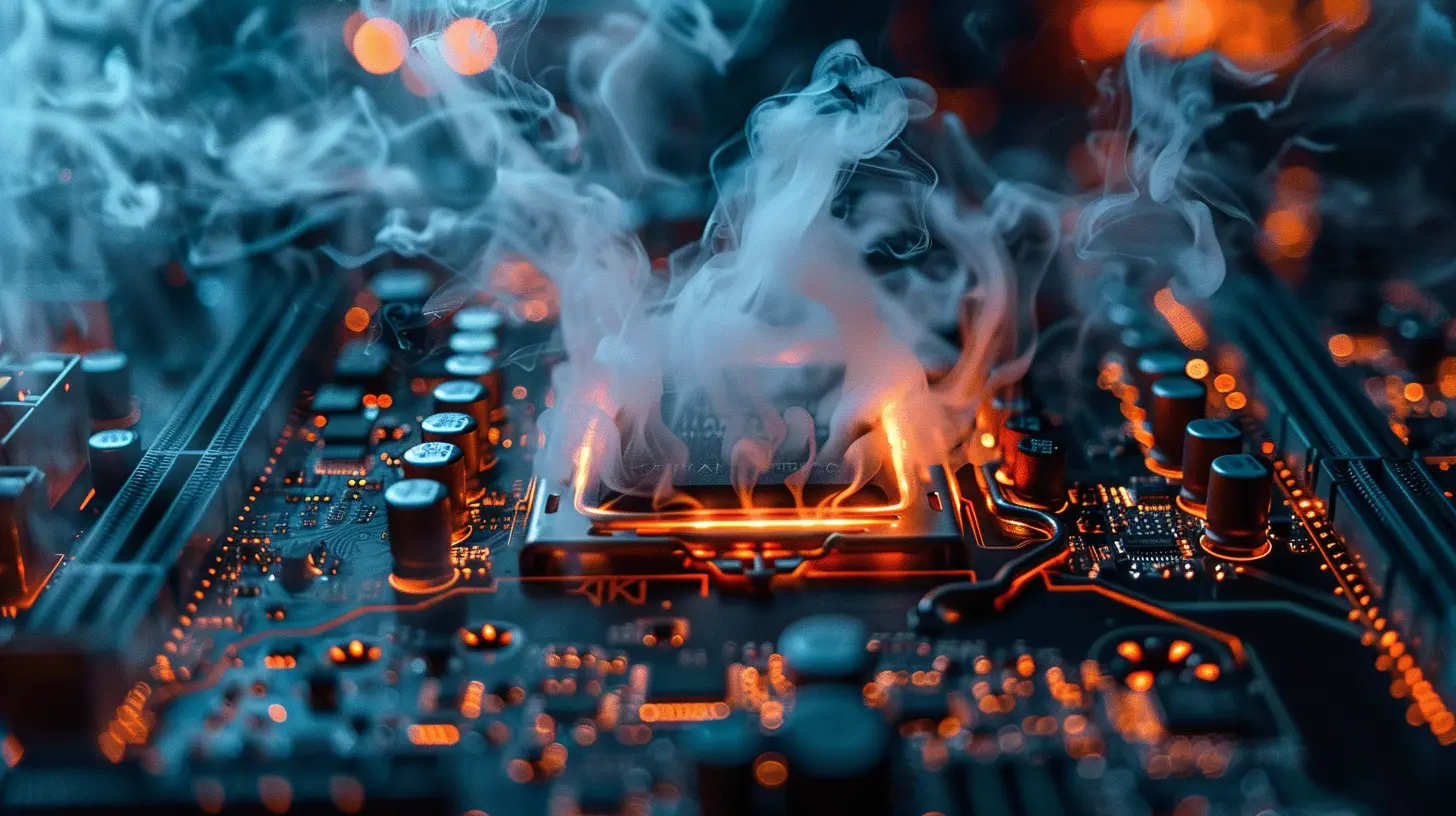How to Boost Your Steam Game Performance without Upgrading Your PC
27 June 2025
Let’s be honest—PC upgrades can be expensive. Whether it’s a new graphics card or upping your RAM, the price tags can burn a hole in your wallet. But what if you could squeeze out better performance from your Steam games without putting down a single dime on new hardware?
Sounds too good to be true? It’s not.
In this guide, I’ll show you practical, tried-and-true ways to give your Steam games a serious performance bump without upgrading your PC. Whether you're running on a low-end machine or just trying to get smoother gameplay, these tips are for you.
So, grab your coffee (or energy drink), and let’s dive in.
🧠 First, Understand What “Performance” Really Means
Before we start tweaking, let’s set the record straight—game performance is usually about three things:- Frame Rate (FPS): Higher FPS means smoother gameplay.
- Game Load Times: Quicker load times mean less waiting and more playing.
- Stability: Fewer crashes, stuttering, and glitches.
If your games are stuttering, lagging, or freezing, there’s a good chance your system just needs some love—not an expensive new GPU.
🎯 Step #1: Optimize Steam’s In-App Settings
We’re talking about boosting Steam game performance, so why not start with Steam itself?Turn Off Steam Overlay
Steam Overlay is handy for messaging friends or grabbing screenshots mid-game. But it also eats up system resources.- Go to Steam > Settings > In-Game.
- Uncheck Enable the Steam Overlay while in-game.
Doing this can free up a chunk of memory and reduce crashes or lag in some games.
Disable Automatic Updates for Non-Essential Games
If Steam is downloading updates in the background while you’re gaming—bad news. Your connection and CPU can take a hit.- Right-click a game in your library > Properties > Updates.
- Set to Only update this game when I launch it.
This ensures you’re not draining performance when you don’t have to.
🖥️ Step #2: Dial In Your In-Game Graphics Settings
Here’s the truth: Not every game needs ultra settings. In fact, many modern games are optimized so poorly that “Ultra” can run like molasses on a medium-spec PC.Use Presets, Then Fine-Tune
Start with the “Medium” preset and adjust from there. Focus on:- Turn off Motion Blur – This one’s a performance hog and barely adds anything visually.
- Lower Anti-Aliasing – FXAA or off entirely can boost frame rates.
- Reduce Shadow Quality – Shadows look nice, but they’re surprisingly demanding.
- Drop Texture Quality if low on RAM or VRAM.
It’s all about balance. Turn off the eye candy you barely notice and keep what enhances your game visually.
🛠️ Step #3: Tweak PC Settings for Gaming Efficiency
You don’t need to be a tech wizard to make Windows get along with your games better. A few easy tweaks can make a world of difference.Enable Game Mode in Windows
This setting prioritizes resources for gaming.- Go to Settings > Gaming > Game Mode.
- Turn it ON.
Simple, but effective.
Disable Background Apps While Gaming
Background apps may seem harmless, but they can hog memory, CPU, and even GPU cycles. Think Discord, Chrome, Spotify—you name it.- Press Ctrl + Shift + Esc to open Task Manager.
- Check what’s running under the Processes tab.
- Right-click and End Task on non-essential apps.
Think of it like closing all the apps before a big Zoom call—you want your PC focused.
Adjust Windows Power Settings
Windows sometimes tries to “save energy” by limiting your CPU. Let’s fix that.- Go to Control Panel > Hardware and Sound > Power Options.
- Set to High Performance or Ultimate Performance (if available).
Boom—your processor is now ready to go full throttle.
🧹 Step #4: Clean Up Your System
Sometimes, a cluttered system is the main reason your games feel sluggish.Free Up Disk Space
Games need space—lots of it. If your drive is full, performance can plummet.- Use Storage Sense in Windows: Settings > System > Storage.
- Clear temporary files, junk, and old downloads.
Also, uninstall games you don’t play anymore (#MinimalismFTW).
Defragment (HDD Only)
If you’re still on a traditional hard drive (HDD), defragging can help access game files faster.- Open Defragment and Optimize Drives.
- Select your drive and hit Optimize.
Note: If you have an SSD, skip this. SSDs don’t need defragging and can even be harmed by it.
🐢 Step #5: Prevent Overheating
Your PC might be slowing down to protect itself from overheating. It’s called thermal throttling—and it's a silent performance killer.Dust Out Your Rig
Sounds basic, but it works.Dust buildup = bad airflow = heat = lag.
Use a can of compressed air to clean your fans, vents, and heat sinks.
Keep Things Cool
- Use a cooling pad for laptops.- Ensure proper ventilation for desktops (don’t cram it into a tight shelf).
- Replace old thermal paste if you’re comfortable doing so (this is optional, advanced-level stuff).
🧩 Step #6: Update Drivers and Software
Keeping things up to date is like giving your PC a tune-up.Update Your GPU Drivers
Whether it’s NVIDIA, AMD, or Intel—updating your graphics drivers can result in instant performance improvements.Visit the manufacturer’s official site or use their utility software (like GeForce Experience or Radeon Software).
Update Windows
Believe it or not, some Windows updates contain patches and performance improvements specifically for gaming. Don’t sleep on them.- Go to Settings > Update & Security > Windows Update.
- Click Check for updates.
📝 Step #7: Use Launch Options in Steam
Steam lets you input custom launch parameters for each game. This tells the game to prioritize certain behavior—like starting in full screen or allocating more resources.For example:
- Right-click a game > Properties > Launch Options.
- Try these:
- `-high` — sets the game to high CPU priority.
- `-novid` — skips intro videos to speed up launch time.
- `-fullscreen` — forces full screen (better performance than windowed or borderless).
- `-threads X` — where X is your number of CPU cores.
Test carefully—what works for one game might not work for another.
🧼 Step #8: Use Game Booster Software (Optional)
There are free tools out there designed to temporarily shut down background processes and free up RAM.Some popular options:
- Razer Cortex
- Wise Game Booster
- MSI Afterburner (more advanced, includes overclocking)
These tools aren’t magic bullets but can help if you’ve got a cluttered system and want a one-click boost.
🎮 Step #9: Use Mods or Community Optimization Packs
This one depends on the game. Some titles (like Skyrim, Fallout, or GTA V) have massive modding communities that create patches to improve performance.Check out fan forums, Steam Workshop, or Nexus Mods for well-reviewed options.
But heads up—modding can break stuff if done incorrectly. Always back up your files first.
⚠️ Step #10: Turn Off Fancy Stuff You Don't Need
Look, RGB lighting, animated wallpapers, and fancy visual effects are fun. But they don’t help your frame rate.- Disable Windows visual effects: System > Advanced System Settings > Performance > Adjust for Best Performance.
- Avoid apps like Wallpaper Engine while gaming.
- Switch your desktop background to a static image.
It’s like taking off a winter coat before a sprint—your system can move way faster without all the fluff.
🚀 Final Thoughts
You don’t always need a shiny new graphics card to get your games running better. With a little patience and care, your current PC can still deliver solid performance—with the right tweaks.Tuning your setup is kind of like adjusting the strings of a guitar. A little tweak here, a small change there—and you might just find your system humming beautifully with smooth frame rates and better load times.
So go ahead—try these tips today. Your Steam library will thank you, and so will your wallet.
Happy gaming!
all images in this post were generated using AI tools
Category:
SteamAuthor:

Lucy Ross
Discussion
rate this article
2 comments
Ford Curry
Optimizing your Steam game performance doesn't always require new hardware. Consider adjusting in-game settings, managing background processes, and keeping drivers updated. These tweaks can significantly enhance gameplay experience, ensuring smoother performance and better frame rates without breaking the bank.
October 31, 2025 at 4:49 AM
Xylo Mahoney
Great tips! I appreciate the emphasis on optimizing settings and managing background processes. These simple changes can significantly enhance gaming experiences. Thank you!
June 30, 2025 at 2:43 AM

Lucy Ross
Thank you for your feedback! I'm glad you found the tips helpful for improving your gaming experience. Happy gaming!


